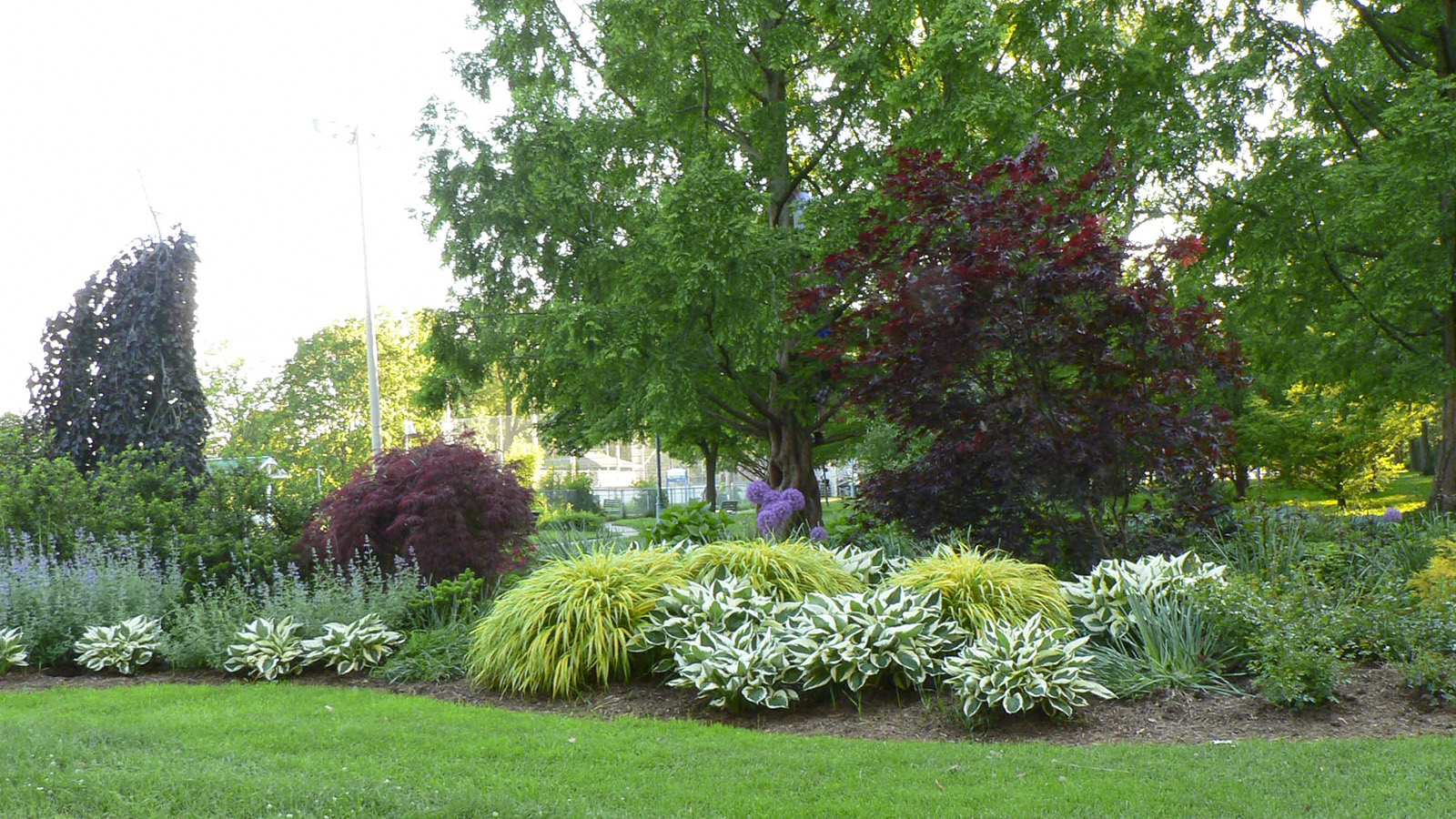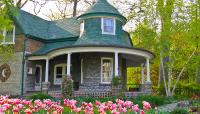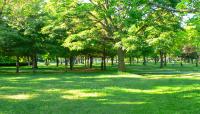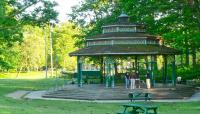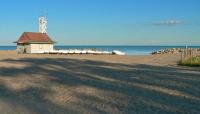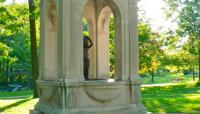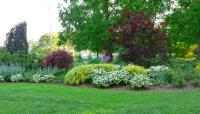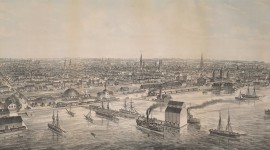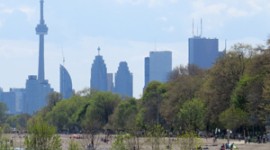This 6.5-hectare park between Queen Street East and the shore of Lake Ontario derives from land purchased in the mid-1860s by Joseph Williams. After clearing a portion of the land along the lakeshore, Williams opened the “Canadian Kew Gardens” in 1879, a seasonal resort offering meals and accommodations to summer boarders and campers. In 1907 the City of Toronto purchased the property for parkland, and a branch of the Toronto Public Library was built at its northeast corner nine years later. On the east perimeter of the park, a house with a distinctive stone façade and groomed flowerbeds built in 1901 by Kew Williams (Joseph’s son) served as the residence of head city gardeners from 1907 to 2000.
Walking trails gradually descend from surrounding streets to wind through mature oaks and maples, which dot the park’s grassy lawn but concede the center to a lighted baseball diamond and a bandstand. In the northwest are a playground and wading pool, while a cenotaph, fronting a wide apron on Queen Street, honors all Canadian veterans. To the north is a monumental Renaissance-style drinking fountain designed by Morris Klein, erected in 1920 to remember Dr. William Young for his pro bono work with local children. On the southern end of the park, recreational facilities include tennis courts, a sport field, and an ice rink. A bicycle path and boardwalk run along the beach, where the Leuty Lifeguard Station, a local landmark built circa 1920, remains in use.




